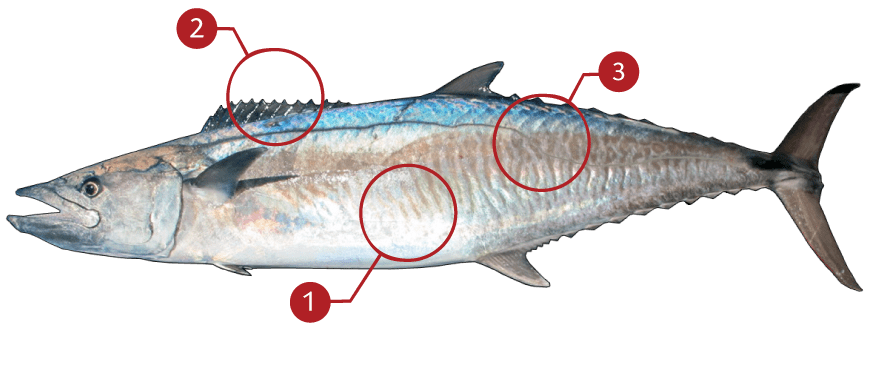KING MACKEREL
How to identify a King Mackerel
They can be distinguished from other Spanish mackerels in the western Atlantic by the sharp dip in the lateral line under the second dorsal fin and by the relatively small number of spines in the first dorsal fin (14-16). The young have spots similar to those in the Spanish mackerel but these spots disappear with age. The first dorsal fin is uniformly blue; the anterior third of this fin is never black as it is in the Spanish mackerel and the cero mackerel.
Where to catch King Mackerel
The king mackerel can be found in the western Atlantic Ocean in tropical and subtropical waters, it ranges from Maine in the U.S. to Rio de Janeiro, Brazil, including the Gulf of Mexico, and is common around South Florida in the winter months. This migratory species is constantly on the move. Stocks wintering in Florida migrate as far west as Texas and as far north as Virginia during the summer. It also occurs around South Florida in the spring and early summer months.A coastal, pelagic, schooling species, it is usually found in waters of 10-20 fathoms. Occasionally it may be caught from ocean piers and around inlets. Congregations often occur around wrecks, buoys, coral reefs, and other such areas where food is abundant. Schools vary in size and the largest individuals are usually loners.
IDENTIFICATION

| |
The entire body is covered with very small, hardly visible, loosely attached scales |
| |
Relatively small number of spines in the first dorsal fin (14-16) |
| |
A major identifiere is the sharp dip in the lateral line under the second dorsal fin |
TARGET AREAS
|
|
Acknowledgements: We thank TAKEMEFISHING.org (www.takemefishing.org), Wisconsin Department of Natural Resources, Indiana Department of Natural Resources for their contributions to these FISH FACTS.

